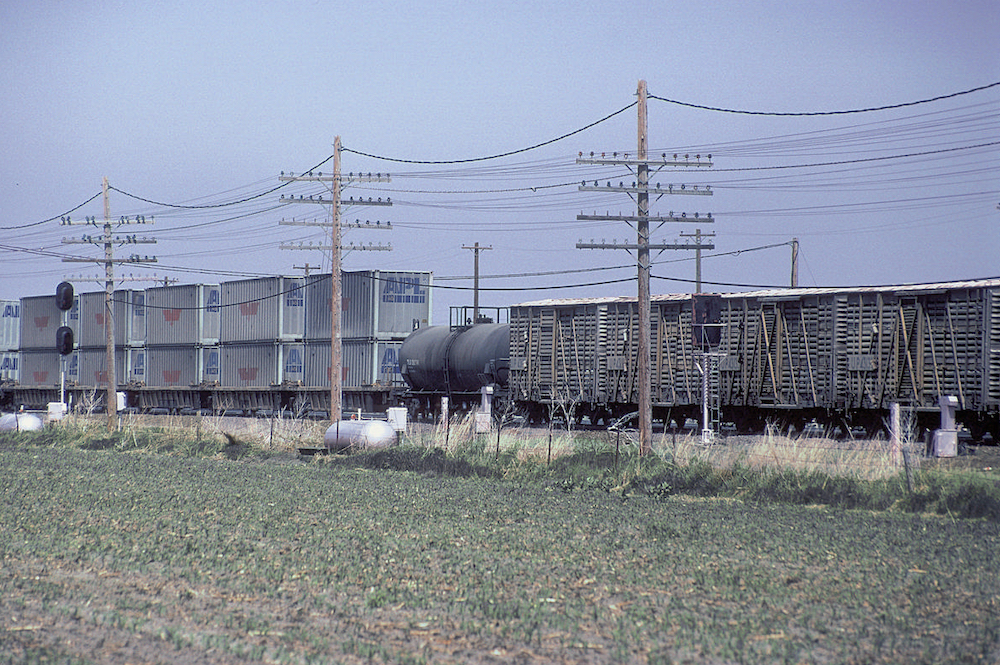
Livestock shipments and railroads had a love-hate relationship that kindled in the 1850s, blossomed after the Civil War, matured with the growth of big-city stockyards and giant meat-processing plants, then slowly faded in the 1960s and 1970s. While it lasted, livestock shipments were a major part of the railroad scene.
Hammered by aging physical plants and high labor costs, the city stockyard/packing centers declined after World War II. Today’s plants are smaller, highly mechanized, and located closer to livestock producers. The business has decentralized to the point that it’s hard to grasp just how large stockyards and meat-packing facilities once were. A million animals a year once passed through Kansas City’s stockyards, and the packing plants and stockyards of National City, Ill., across the river from St. Louis, provided employment for more than 14,000 people. Chicago’s meat-packing district covered 190 city blocks and unloaded 60 cars an hour.
Major stockyards often had train-length unloading tracks because railroads wanted to avoid switching stockcars for fear of injuring the animals. Besides the familiar slat-sided stockcars, packing plants also required boxcars, refrigerator cars, and tank cars. Railroads made this activity possible, and trucks took it away. Railroads were not particularly sorry to see it go.
The foundations of the railroad livestock business trace back to the mid-1800s, when the growing rail network meant a farmer or rancher could deliver cattle, pigs, or sheep to a handy loading pen and know that in a few days his animals would be delivered to stockyards like those in Cincinnati, Chicago, East St. Louis, Kansas City, or Omaha. Livestock buyers could stay in one place and have the animals come to them, the competition between buyers ensured a fair price for the producer, and the predictable supply of animals made very large packing plants possible, often located next to the stockyards. For their part, packing plants needed cheap labor and plenty of it, something the major cities of the day had in abundance. The final piece in the puzzle was the development of refrigerated rail cars in the 1880s, which meant that top-quality meat could be shipped from Midwestern cities to Eastern markets.
For 100 years, this way of doing business turned lots of animals into lots of money, but there were some drawbacks. As early as 1912, railroad expert John Droege warned (in his classic book Freight Terminals and Trains), “There is no class or character of freight handled that is more susceptible to heavy losses, real or imagined, than livestock. It is a debatable question whether the profits thereon justify the movement at the rates in effect.”
Federal regulations require that animals in transit be unloaded every 28 hours (or 36 hours with shippers’ approval) for at least five hours to be rested, watered, and fed before being reloaded. These restrictions meant that stock trains had to keep moving, even at the expense of delaying other trains. Livestock also required specialized rolling stock, priority handling in yards, and purpose-built loading, unloading, and resting facilities.
Livestock shipments were often accompanied by riders known as “drovers” who represented the owner and took care of the loading and unloading of the animals. If the shipment was a small one, drovers generally rode in the caboose. For large shipments some railroads had “drover cars.” These were usually old passenger cars fitted with bunks and placed ahead of the caboose but purpose-built drovers’ cabooses were a fixture on some railroads.
Livestock was a big business for railroads, but it may have been more trouble than it was worth.






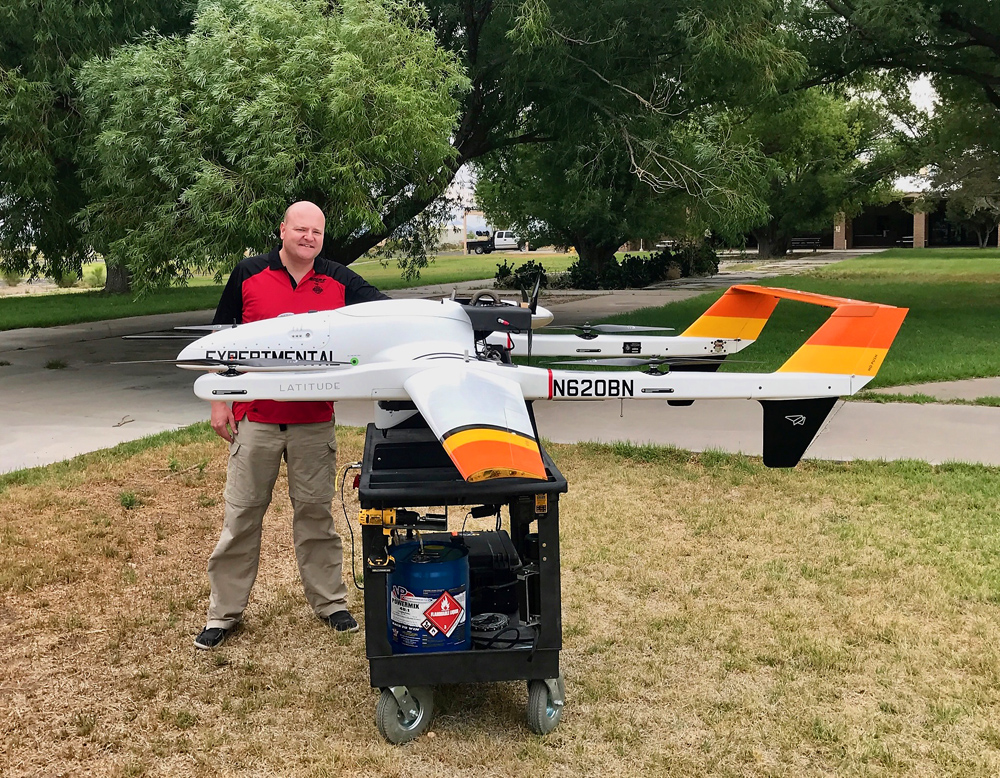
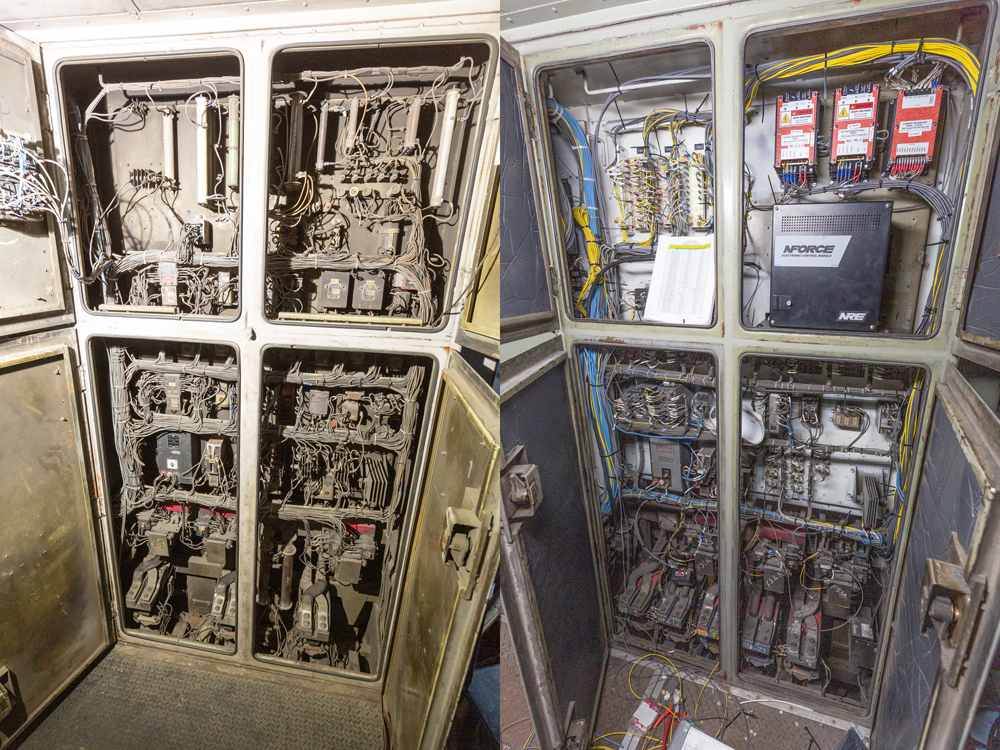
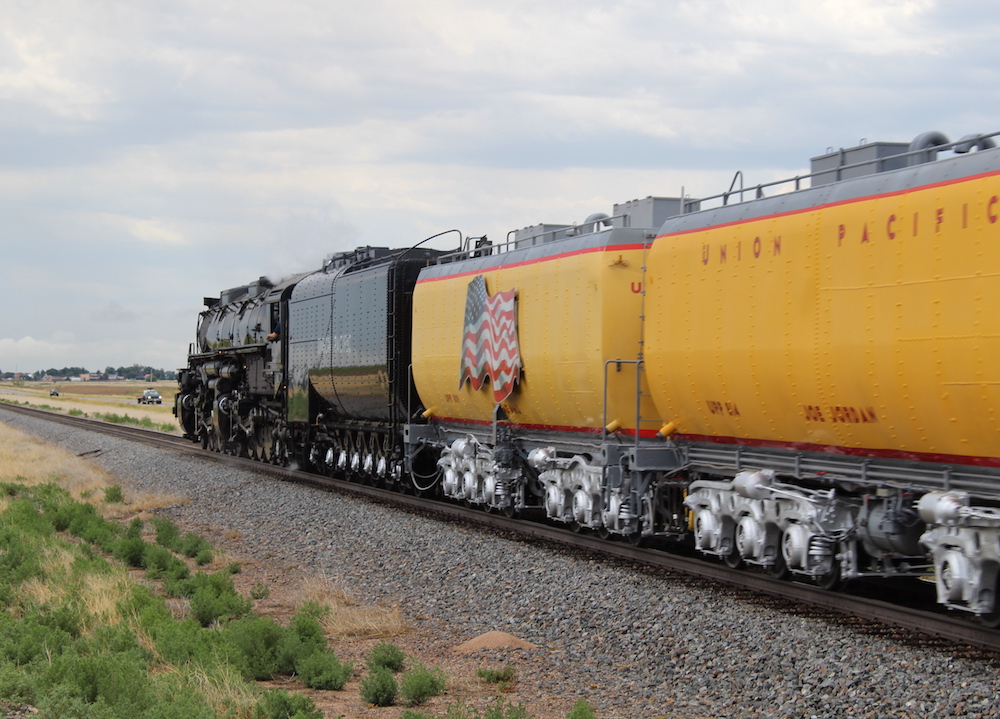
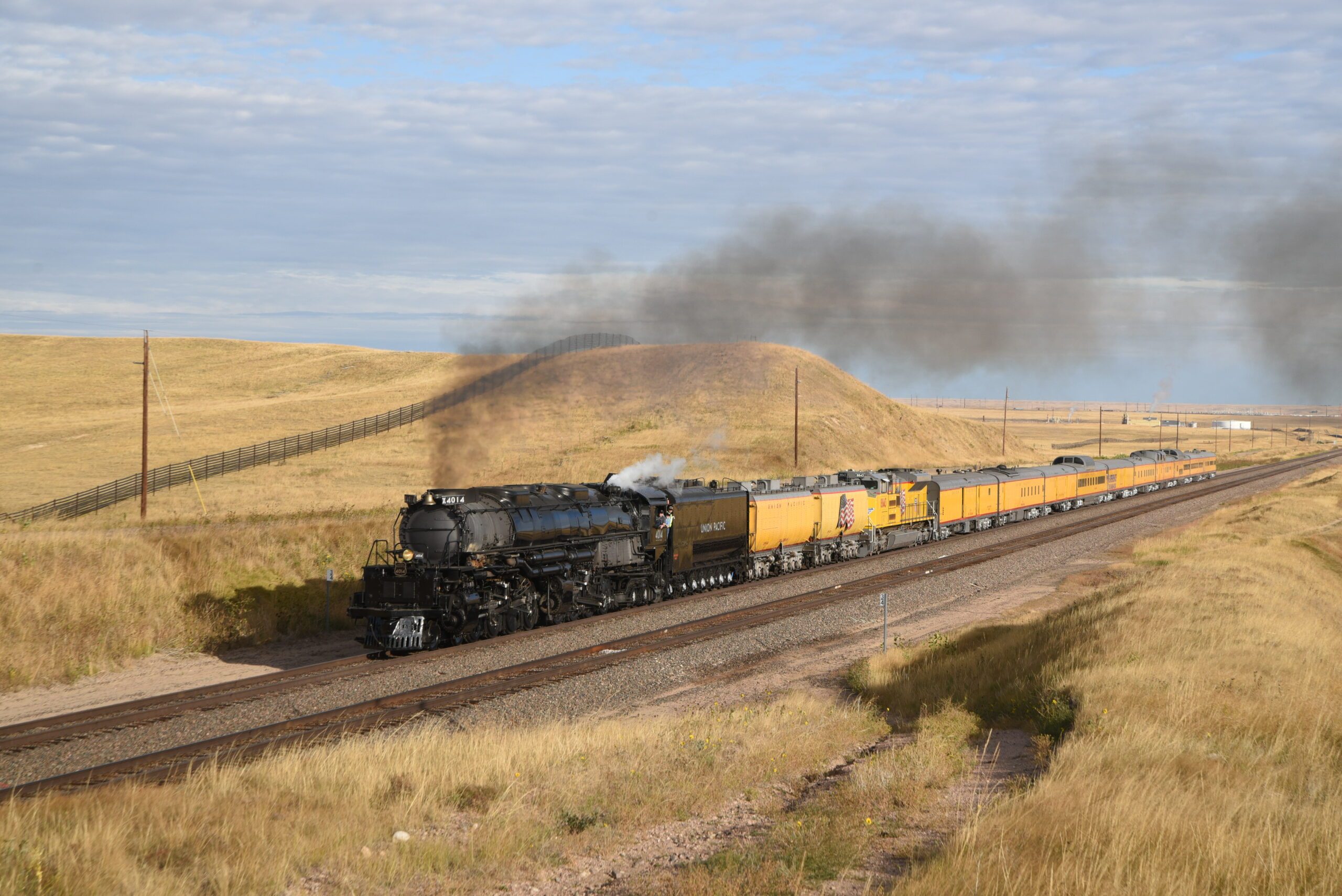
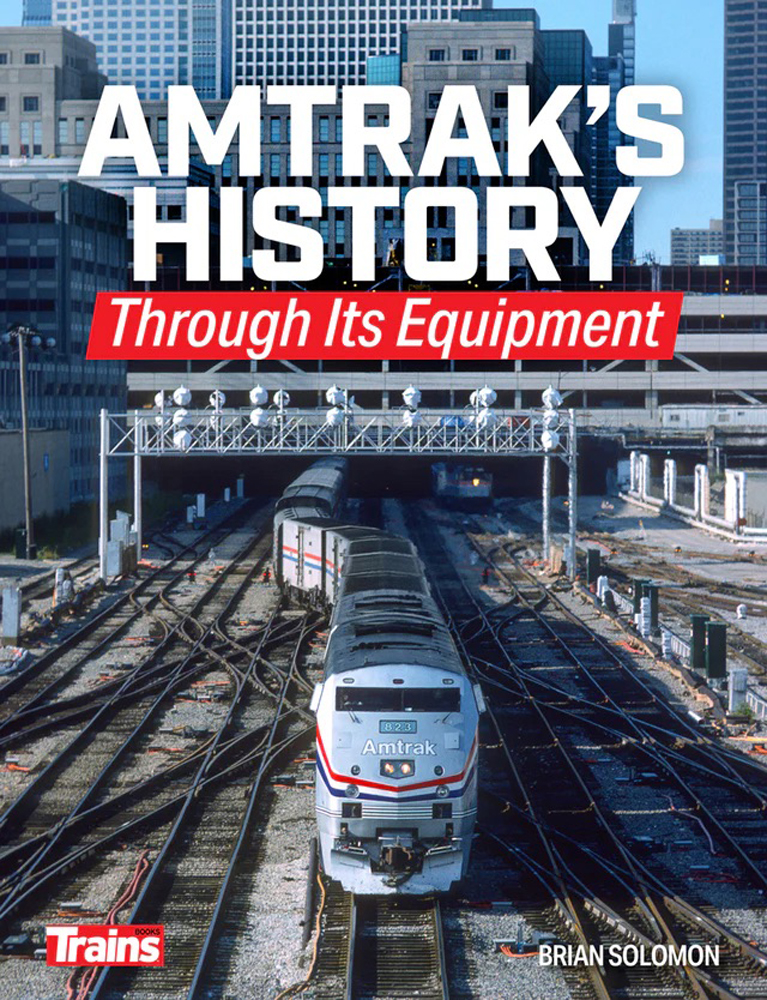
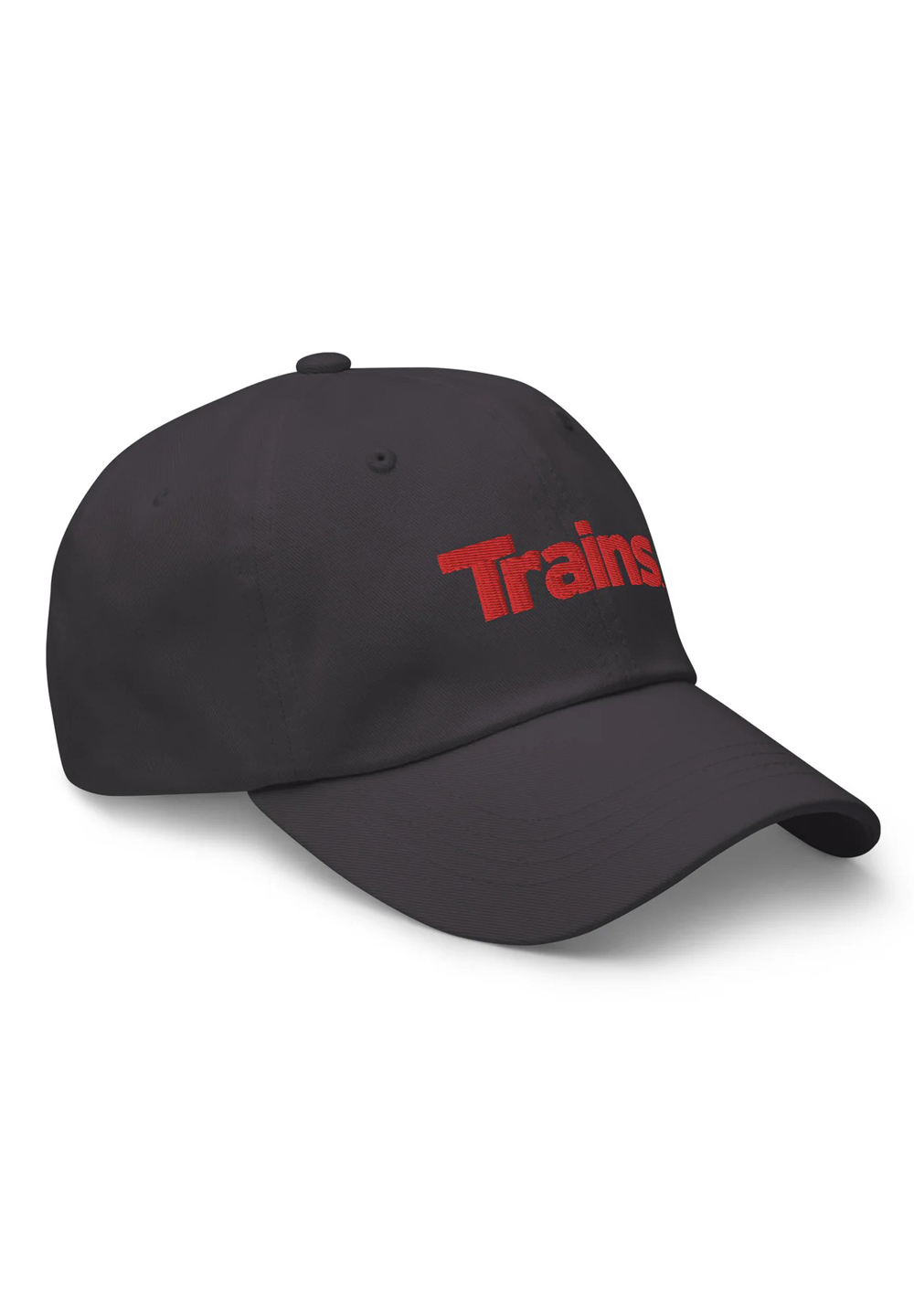
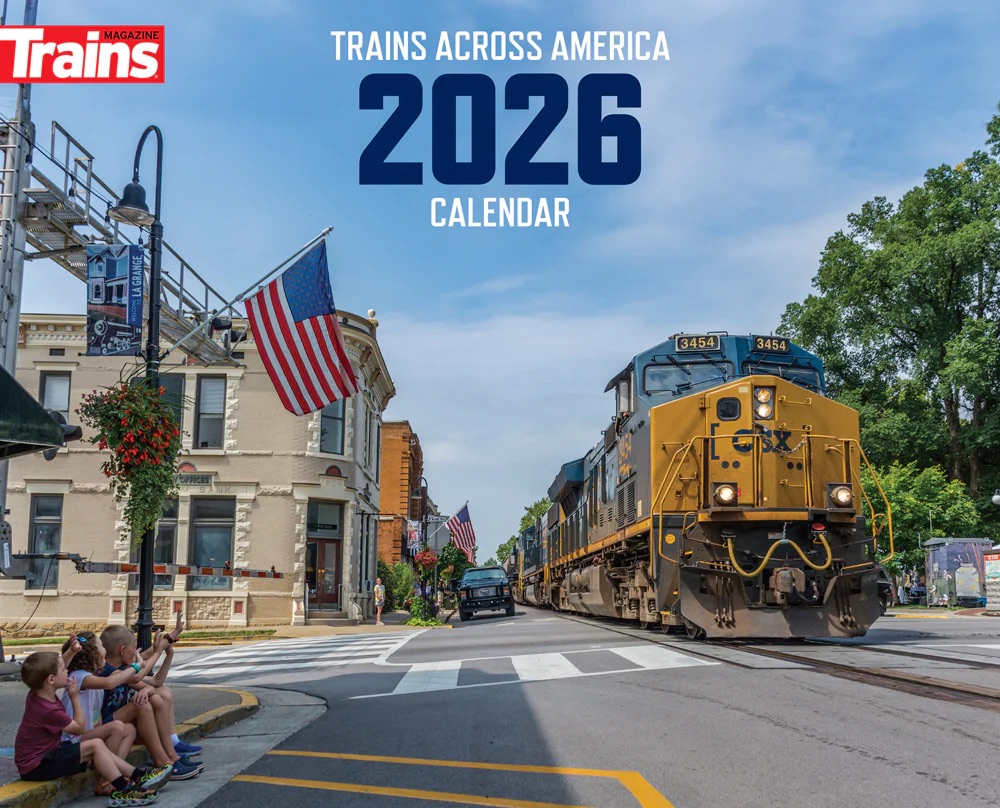
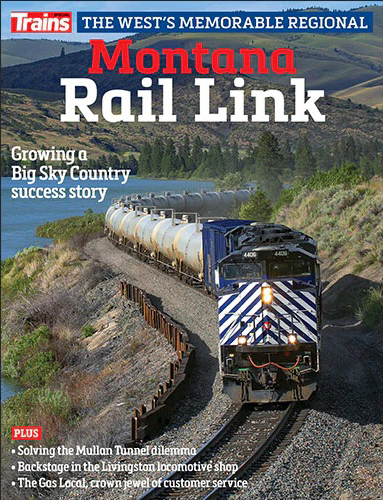
My Grandfather rode a “drovers car” (many times just an extra caboose if numbers of men was small) on the “Challenger” from Cache Junction, UT, via Salt LAke City, UT to Los Angeles where their pigs, several hundred at a time, were delivered to Clougherty Packing, the famous Farmer John Brand meat producer and maker of the “Dodger Dog,” the official hot dog of the Los Angeles Dodgers. Grandpa always said that Union Pacific “bent over backwards” to make sure, “we and our hogs got the best treatment.” Later as an adult, I remember seeing the newer all-metal, triple deck green HOGX stockcars at the head of southbound freights in Salt Lake City, UT as they prepared to ply the UP’s Los Angeles & Salt Lake Route to Farmer John in LA. Having the cars at the head of the trains was for two purposes. One, to reduce slack action on the cars which could injure pigs and two, to put the cars as far away from the crew in the caboose as possible, for “obvious” reasons… The end of the cabooses in trains coincided with the end of live hogs, as Smithfield foods, began to ship fresh, hanging processed hogs by rail to LA from their huge Circle Four hog farm near Fillmore, Utah and live hog cars were no longer necessary…